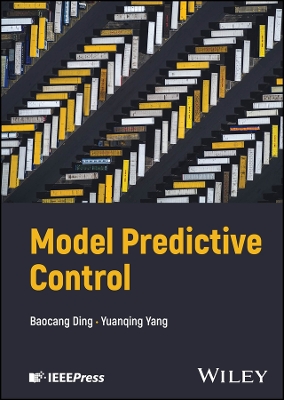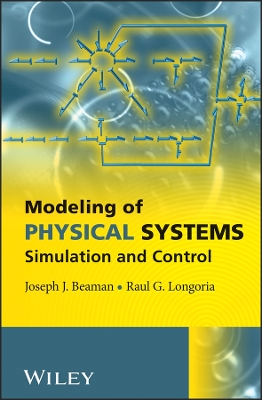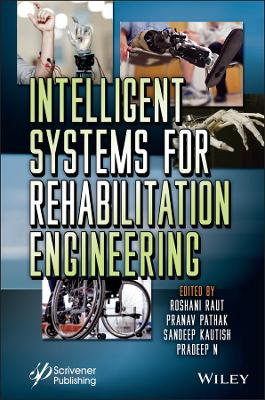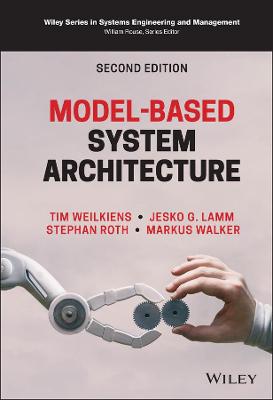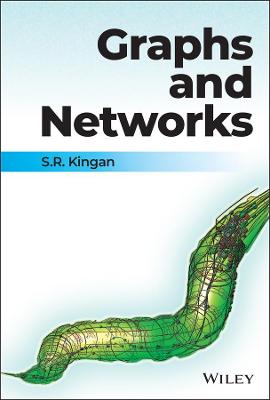Modeling Human?System Interaction
 -15%
portes grátis
-15%
portes grátis
Modeling Human?System Interaction
Philosophical and Methodological Considerations, with Examples
Sheridan, Thomas B.
John Wiley & Sons Inc
03/2017
192
Dura
Inglês
9781119275268
15 a 20 dias
408
Introduction 1
1 Knowledge 5
Gaining New Knowledge 5
Scientific Method: What Is It? 7
Further Observations on the Scientific Method 8
Reasoning Logically 10
Public (Objective) and Private (Subjective) Knowledge 11
The Role of Doubt in Doing Science 11
Evidence: Its use and Avoidance 12
Metaphysics and its Relation to Science 12
Objectivity, Advocacy, and Bias 13
Analogy and Metaphor 14
2 What is a Model? 17
Defining "Model" 17
Model Attributes: A New Taxonomy 20
Examples of Models in Terms of the Attributes 25
Why Make the Effort to Model? 27
Attribute Considerations in Making Models Useful 27
Social Choice 30
What Models are Not 31
3 Important Distinctions in Modeling 33
Objective and Subjective Models 33
Simple and Complex Models 35
Descriptive and Prescriptive (Normative) Models 36
Static and Dynamic Models 36
Deterministic and Probabilistic Models 36
Hierarchy of Abstraction 37
Some Philosophical Perspectives 38
4 Forms of Representation 41
Verbal Models 41
Graphs 42
Maps 44
Schematic Diagrams 45
Logic Diagrams 46
Crisp Versus Fuzzy Logic (see also Appendix, Section "Mathematics of Fuzzy Logic") 48
Symbolic Statements and Statistical Inference (see also Appendix, Section "Mathematics of Statistical Inference From Evidence") 50
5 Acquiring Information 51
Information Communication (see also Appendix, Section "Mathematics of Information Communication") 51
Information Value (see also Appendix, Section "Mathematics of Information Value") 53
Logarithmic-Like Psychophysical Scales 54
Perception Process (see also Appendix, Section "Mathematics of the Brunswik/Kirlik Perception Model") 54
Attention 55
Visual Sampling (see also Appendix, Section "Mathematics of How Often to Sample") 56
Signal Detection (see also Appendix, Section "Mathematics of Signal Detection") 58
Situation Awareness 59
Mental Workload (see also Appendix, Section "Research Questions Concerning Mental Workload") 60
Experiencing What is Virtual: New Demands for Human-System Modeling (see also Appendix Section "Behavior Research Issues in Virtual Reality") 64
6 Analyzing the Information 69
Task Analysis 69
Judgment Calibration 70
Valuation/Utility (see also Appendix, Section "Mathematics of Human Judgment of Utility") 72
Risk and Resilience 73
Definition of Risk 73
Meaning of Resilience 73
Trust 75
7 Deciding on Action 77
What is Achievable 77
Decision Under Condition of Certainty (see also Appendix, Section "Mathematics of Decisions Under Certainty") 78
Decision Under Condition of Uncertainty (see also Appendix, Section "Mathematics of Decisions Under Uncertainty") 79
Competitive Decisions: Game Models (see also Appendix "Mathematics of Game Models") 79
Order of Subtask Execution 80
8 Implementing and Evaluating the Action 83
Time to Make a Selection 83
Time to Make an Accurate Movement 84
Continuous Feedback Control (see also Appendix, Section "Mathematics of Continuous Feedback Control") 85
Looking Ahead (Preview Control) (see also Appendix, Section "Mathematics of Preview Control") 87
Delayed Feedback 88
Control by Continuously Updating an Internal Model (see also Appendix, Section "Stepping Through the Kalman Filter System") 88
Expectation of Team Response Time 90
Human Error 91
9 Human-Automation Interaction 95
Human-Automation Allocation 95
Supervisory Control 96
Trading and Sharing 98
Adaptive/Adaptable Control 101
Model-Based Failure Detection 102
10 Mental Models 105
What is a Mental Model? 105
Background of Research on Mental Models 106
ACT-R 108
Lattice Characterization of a Mental Model 110
Neuronal Packet Network as a Model of Understanding 112
Modeling of Aircraft Pilot Decision-Making Under Time Stress 113
Mutual Compatibility of Mental, Display, Control, and Computer Models 114
11 Can Cognitive Engineering Modeling Contribute to Modeling Large-Scale Socio-Technical Systems? 115
Basic Questions 115
What Large-Scale Social Systems are we Talking About? 116
What Models? 120
Potential of Feedback Control Modeling of Large-Scale Societal Systems 122
The STAMP Model for Assessing Errors in Large-Scale Systems 122
Past World Modeling Efforts 123
Toward Broader Participation 124
Appendix 129
Mathematics of Fuzzy Logic 129
Mathematics of Statistical Inference from Evidence 131
Mathematics of Information Communication 132
Mathematics of Information Value 134
Mathematics of the Brunswik/Kirlik Perception Model 135
Mathematics of How Often to Sample 136
Mathematics of Signal Detection 138
Research Questions Concerning Mental Workload 141
Behavior Research Issues in Virtual Reality 144
Mathematics of Human Judgment of Utility 146
Mathematics of Decisions Under Certainty 147
Mathematics of Decisions Under Uncertainty 149
Mathematics of Game Models 150
Mathematics of Continuous Feedback Control 152
Mathematics of Preview Control 153
Stepping Through the Kalman Filter System 154
References 159
Index 167
Introduction 1
1 Knowledge 5
Gaining New Knowledge 5
Scientific Method: What Is It? 7
Further Observations on the Scientific Method 8
Reasoning Logically 10
Public (Objective) and Private (Subjective) Knowledge 11
The Role of Doubt in Doing Science 11
Evidence: Its use and Avoidance 12
Metaphysics and its Relation to Science 12
Objectivity, Advocacy, and Bias 13
Analogy and Metaphor 14
2 What is a Model? 17
Defining "Model" 17
Model Attributes: A New Taxonomy 20
Examples of Models in Terms of the Attributes 25
Why Make the Effort to Model? 27
Attribute Considerations in Making Models Useful 27
Social Choice 30
What Models are Not 31
3 Important Distinctions in Modeling 33
Objective and Subjective Models 33
Simple and Complex Models 35
Descriptive and Prescriptive (Normative) Models 36
Static and Dynamic Models 36
Deterministic and Probabilistic Models 36
Hierarchy of Abstraction 37
Some Philosophical Perspectives 38
4 Forms of Representation 41
Verbal Models 41
Graphs 42
Maps 44
Schematic Diagrams 45
Logic Diagrams 46
Crisp Versus Fuzzy Logic (see also Appendix, Section "Mathematics of Fuzzy Logic") 48
Symbolic Statements and Statistical Inference (see also Appendix, Section "Mathematics of Statistical Inference From Evidence") 50
5 Acquiring Information 51
Information Communication (see also Appendix, Section "Mathematics of Information Communication") 51
Information Value (see also Appendix, Section "Mathematics of Information Value") 53
Logarithmic-Like Psychophysical Scales 54
Perception Process (see also Appendix, Section "Mathematics of the Brunswik/Kirlik Perception Model") 54
Attention 55
Visual Sampling (see also Appendix, Section "Mathematics of How Often to Sample") 56
Signal Detection (see also Appendix, Section "Mathematics of Signal Detection") 58
Situation Awareness 59
Mental Workload (see also Appendix, Section "Research Questions Concerning Mental Workload") 60
Experiencing What is Virtual: New Demands for Human-System Modeling (see also Appendix Section "Behavior Research Issues in Virtual Reality") 64
6 Analyzing the Information 69
Task Analysis 69
Judgment Calibration 70
Valuation/Utility (see also Appendix, Section "Mathematics of Human Judgment of Utility") 72
Risk and Resilience 73
Definition of Risk 73
Meaning of Resilience 73
Trust 75
7 Deciding on Action 77
What is Achievable 77
Decision Under Condition of Certainty (see also Appendix, Section "Mathematics of Decisions Under Certainty") 78
Decision Under Condition of Uncertainty (see also Appendix, Section "Mathematics of Decisions Under Uncertainty") 79
Competitive Decisions: Game Models (see also Appendix "Mathematics of Game Models") 79
Order of Subtask Execution 80
8 Implementing and Evaluating the Action 83
Time to Make a Selection 83
Time to Make an Accurate Movement 84
Continuous Feedback Control (see also Appendix, Section "Mathematics of Continuous Feedback Control") 85
Looking Ahead (Preview Control) (see also Appendix, Section "Mathematics of Preview Control") 87
Delayed Feedback 88
Control by Continuously Updating an Internal Model (see also Appendix, Section "Stepping Through the Kalman Filter System") 88
Expectation of Team Response Time 90
Human Error 91
9 Human-Automation Interaction 95
Human-Automation Allocation 95
Supervisory Control 96
Trading and Sharing 98
Adaptive/Adaptable Control 101
Model-Based Failure Detection 102
10 Mental Models 105
What is a Mental Model? 105
Background of Research on Mental Models 106
ACT-R 108
Lattice Characterization of a Mental Model 110
Neuronal Packet Network as a Model of Understanding 112
Modeling of Aircraft Pilot Decision-Making Under Time Stress 113
Mutual Compatibility of Mental, Display, Control, and Computer Models 114
11 Can Cognitive Engineering Modeling Contribute to Modeling Large-Scale Socio-Technical Systems? 115
Basic Questions 115
What Large-Scale Social Systems are we Talking About? 116
What Models? 120
Potential of Feedback Control Modeling of Large-Scale Societal Systems 122
The STAMP Model for Assessing Errors in Large-Scale Systems 122
Past World Modeling Efforts 123
Toward Broader Participation 124
Appendix 129
Mathematics of Fuzzy Logic 129
Mathematics of Statistical Inference from Evidence 131
Mathematics of Information Communication 132
Mathematics of Information Value 134
Mathematics of the Brunswik/Kirlik Perception Model 135
Mathematics of How Often to Sample 136
Mathematics of Signal Detection 138
Research Questions Concerning Mental Workload 141
Behavior Research Issues in Virtual Reality 144
Mathematics of Human Judgment of Utility 146
Mathematics of Decisions Under Certainty 147
Mathematics of Decisions Under Uncertainty 149
Mathematics of Game Models 150
Mathematics of Continuous Feedback Control 152
Mathematics of Preview Control 153
Stepping Through the Kalman Filter System 154
References 159
Index 167


